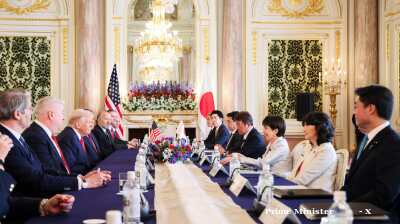The Simandou iron-ore mine and infrastructure project in Guinea has received the green light to proceed with the planned $11.6bn development after clearing all regulatory obstacles.
Simandou is the world's largest untapped reserve of high-grade iron ore, estimated at over 2bn tonnes. The mining concession at Simandou is divided into four blocks.
Two are held by the joint venture Rio Tinto Simfer, which includes the British-Australian multinational mining company Rio Tinto, Chalco Iron Ore Holdings (CIOH), and the Government of the Republic of Guinea. CIOH is owned by multiple Chinese companies: Chinalco (75%), Baowu (20%), China Rail Construction Corporation (CRCC) (2.5%), and China Harbour Engineering Company (CHEC) (2.5%).
The other two blocks are also held by Rio Tinto and the Guinean government, but with a different Chinese partner, Winning Consortium Simandou (WCS). WCS is primarily owned by Winning International Group, along with other partners such as China Hongqiao Group.
The Simandou project has now received all necessary approvals from the Guinean government, allowing the construction of the required infrastructure for the mine's operation to proceed.
The project involves constructing over 600 kilometres of new railway across Guinea and developing port facilities to export up to 120mn tonnes of premium iron ore annually once all four blocks are fully operational. First production is anticipated by the end of 2025.
In a statement, Bold Baatar, Rio Tinto’s executive lead for Guinea and CEO of copper, expressed gratitude to the partners and the government of Guinea for their collaboration in reaching this critical milestone.
“We thank the government of Guinea, Chinalco, Baowu and WCS for their partnership in reaching this milestone towards developing the world class Simandou project,” Baatar said. “Simandou will deliver a significant new source of high-grade iron-ore that will strengthen Rio Tinto’s portfolio for the decarbonisation of the steel industry, along with trans-Guinean rail and port infrastructure that can make a significant contribution to the country’s economic development.”
As part of the cooperation between the Simfer JV and WCS, both companies will work together to build the rail and port infrastructure. Simfer will handle part of the construction and contribute to the overall project cost of $6.5bn, with Rio Tinto covering $3.5bn of this amount.
The infrastructure project will be divided between Simfer and WCS, each focusing on their areas of expertise. Simfer will build a 70km rail spur and a port with a capacity of 60 million tonnes per year. WCS will construct a 536km main rail line, a 16km rail spur, and a similar port. Once finished, the Compagnie du Transguinéen JV will manage all infrastructure and rolling stock, with Simfer and WCS each owning 42.5%, and the Guinean State owning 15%.
News

US-China trade talks deliver breakthrough as markets rally ahead of Trump-Xi meeting at APEC
How and if China will react to a US-Japan rare earths deal remains to be seen but Beijing has said it will suspend its restrictions on rare earth metal exports in what is a move likely to ease pressure on the US tech and defence sectors.

US, Japan sign rare earths deal to ‘secure’ supply chains
The two leaders signed an agreement establishing a framework for cooperation in the mining and processing of rare earths and other essential minerals; a move that underscores growing anxieties over China’s dominance in the sector.
.jpeg)
Mexico secures trade extension with US, averting November 1 tariff escalation
US President Donald Trump and Mexican President Claudia Sheinbaum have agreed to extend a critical trade deadline by several weeks, granting negotiators additional time to resolve 54 outstanding commercial barriers between the nations.

West Africa’s BRVM market cap hits record $21.2bn driven by telecoms, banks
West Africa’s regional bourse hit a record market capitalisation, up 29% YTD, supported by strong performance among telecom and banking stocks, and rising participation from domestic institutional investors.




